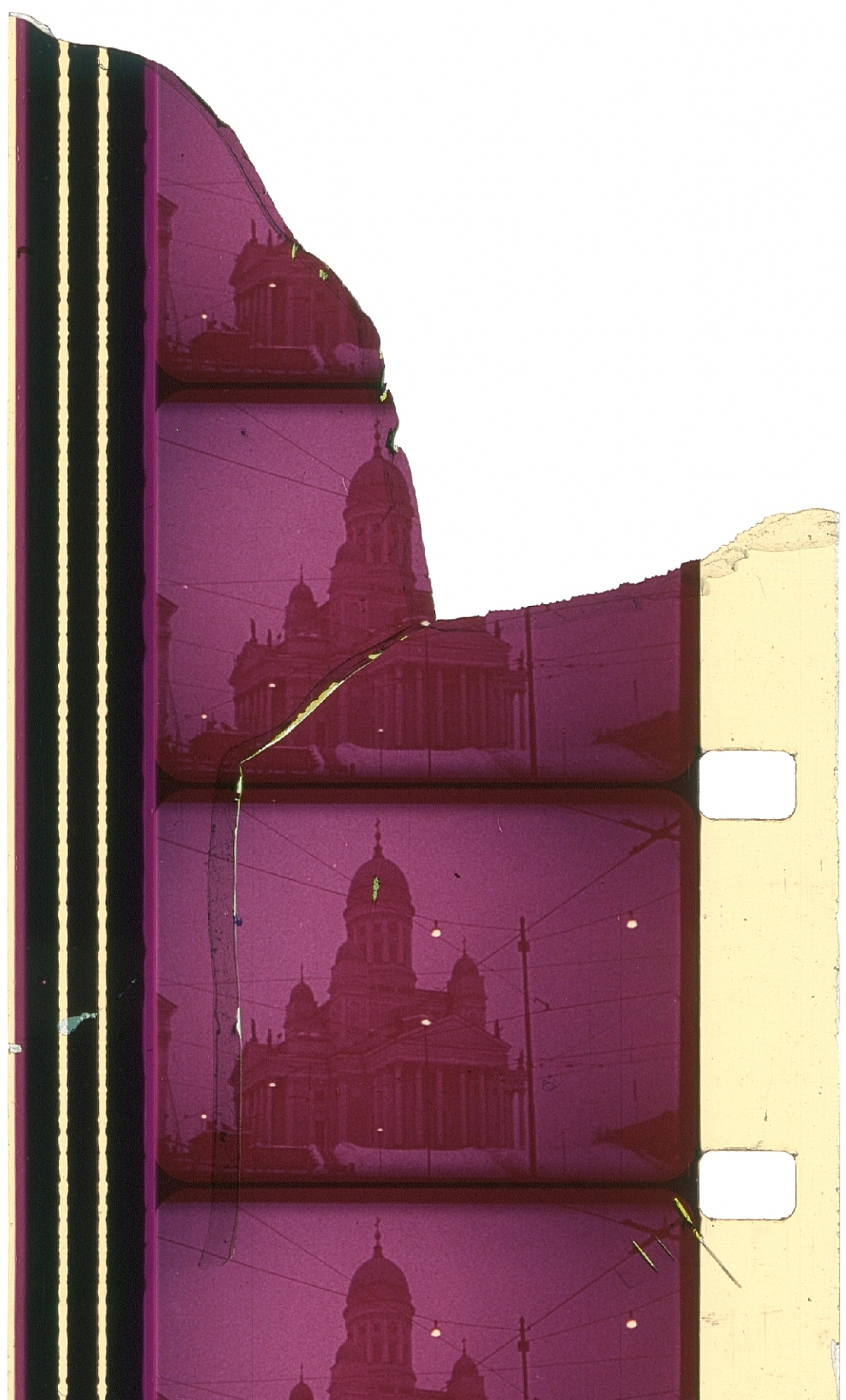JAN IJÄSThe Art of Set Design 26.5.2018 – 17.6.2018
 Helsinki Acts, 2018
Helsinki Acts, 2018HD video
“Can the set take it,” is a question that often gets asked on film shoots. When you adjust a camera position, change a lens or introduce a new panning shot, the orientation and scope of the images you capture change. As a result, you then risk showing a stretch of soundstage wall or even an unwanted glimpse of location.
Jani Ijäs’s The Art of Set Design draws a connection between the urban environment and the film set. His works present the city as an idealised facade or as a placeholder depicting another city altogether. The notion of dressing up an actual lived in city dates back to the so-called Potemkin villages. On the instigation of Prince Grigory Potemkin, deprived Crimean villages were dressed up using fake structures in preparation for Empress Catherine II’s visit to the region. In this exhibition, this idea has been broadened to encompass entire nation states, like North Korea, dressed up as an idealised representation of itself and like the Soviet Union as featured in American spy thrillers. In many ways, these truths and lies, fictions and simulations, the games and deceptions played by the establishment and the “unstable” stage sets are emblematic of our era. Ultimately, the question is, who is responsible for directing the films, designing the sets and choosing the locations through which we move as we go about our lives?
Kim’s Ideal Sets, scripted, directed and edited by Jan Ijäs with cinematography by Simojukka Ruippo, is a video installation that turns its attention to a country built on its carefully manufactured public image and its leader, the author of a book on set design. It takes its cue from the figure of North Korea’s former leader Kim Jong Il (1942–2011) and his film-making treatise, On the Art of Cinema, with a particular focus on the chapter titled The Sets Should Reflect the Times, passages of which are read out by the narrator. Kim Jong Il is known to have been a passionate film buff, with a private collection comprising tens of thousands of titles.
The images in Kim’s Ideal Sets were shot on location in North Korea during a guided tour. These guided visits are highly managed, with all filming and recording activity carefully controlled by the hosts. Everything you see is reminiscent of a theatre or film set. The video installation makes no attempt to steal a peek beyond that ”stage set”, remaining fully focused on showing what it is that the North Koreans want the visitors to see instead. Holiday snaps taken by tourists during their visit to this closely guarded and closed off state serve to reveal the giant stage set. And when the stage is no longer required, the props are simply dismantled and used in other productions or for other means and ends.
During the Cold War, from 1967 to 1997,
Helsinki served as a stand-in for various Russian/Soviet cities in a
total of nine American feature films, mainly spy thrillers. Helsinki was
chosen as the location as it would not have been possible to shoot the
film inside the Soviet Union and Helsinki could easily be “dressed up”
to look unmistakeably like its eastern neighbour. It would not be an
exaggeration to credit Helsinki as a “character actor”.
Every location used in these productions, including sites featured in individual still images, were identified by the Helsinki Acts team and re-shot in the original 35mm film format. The nine parts are each named after the original films.
Kari Yli-Annala
Media artist and film director Jan Ijäs
(b. 1975) studied documentary film making at the Department of Film,
Television and Scenography at the Aalto University in Helsinki. His work
can be described as a blend of avant garde, experimental media art,
contemporary art and documentary film making. His films have been
screened at more than 200 Finnish and international film festivals and
as installations in museums and art galleries. He is the winner of
numerous industry awards, including the Finnish Risto Jarva Prize in
2011 for SWEET MOV(I)E. Raft of the Médusa, Ijäs’s film about
immigration, which screened at Galleria Heino in autumn 2017, was
presented with this year’s Amnesty International Award at the
IndieLisboa film festival in Portugal. It is currently on display at
Touch, the Saastamoinen Foundation Collection exhibition at the Espoo
Museum
of Modern Art’s (EMMA), set to run until 22 July 2018.
With gratitude to: AVEK/Tuuli
Penttinen-Lampisuo, SES/Piia Nokelainen, Arts Promotion Centre
Finland/National Council for Audiovisual Art, Museum of Finnish
Architecture/Antti Aaltonen and Tomi Arpalahti, Cafe Ekberg/Maj-Len
Ekberg, Elokuvakonepaja P. Mutanen/Tuomas "Nopsa" Viitakoski, City of
Helsinki/Rescue Department/Jari J. Markkanen, KAVI/Outi Heiskainen,
Matti Rasi
